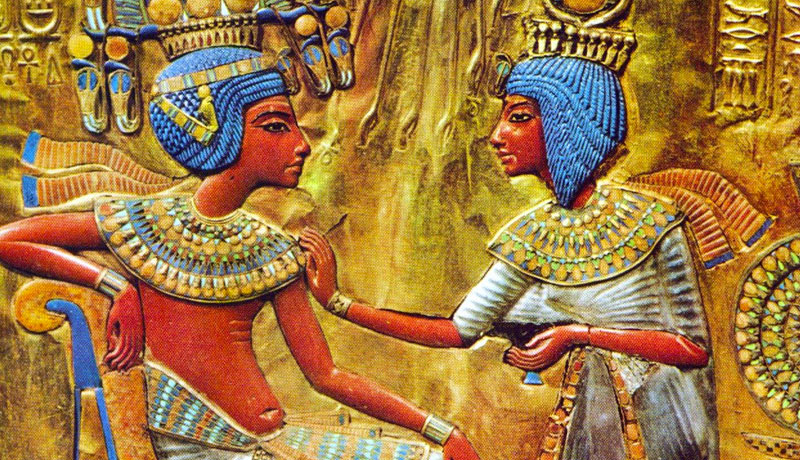Friday, May 31, 2002
8:00 pm – 10:15 pm
Inspirations from the Nile
Opening Remarks H.E. Afaf Elmazariky, Consul
Lecture Egypt in Film – the Good, the Bad, the Nile
Moderator Stuart Tyson Smith overviews the birth of “Egyptomania” and discusses how Egypt maintains its hold on our imaginations.
Performance Geraldine McMillian, soprano, accompanied
Arias from Verdi’s Egyptian inspired Aïda and other works from Egyptian romantic composers of the 19th century and the music pertaining to their Egyptian heritage.
Saturday, June 1, 2002
10:00 am – 4:00 pm
Treasures of the New Kingdom
Distinguished speakers use art and archeology to unlock mysteries 3500 years in our past. UC Berkeley’s Cathleen Keller looks at everyday life in ancient Egypt through art. James Romano of the Brooklyn Museum tells the story of New Kingdom (1570-1182 BCE) pharoahs – Akenhaten, Tutankhamen, Ramses II – through sculpture. Peter Lacovara of the Carlos Museum examines religion through the architecture of the city of Amarna. UC Berkeley Visiting Lecturer Marian Feldman explores the art of diplomacy in the New Kingdom era with an emphasis on the gifts exchanged between leaders in the region and the sharing of technology and resources.
Lecture Life
When thinking of ancient Egypt, we are often struck with an image of King Tut’s golden head or Cleopatra being fanned by the Nile. However, Egyptian reliefs and sculptures also portray average Egyptian’s in the most common settings and routines. In this lecture, Cathleen Keller (Associate Professor, Department of Near Eastern Studies, UC Berkeley) will offer a look at everyday life in ancient Egypt through art.
Lecture Royal
The rulers of the New Kingdom (Dynasties 18 – 20) included some of the most extraordinary and powerful personalities in the 3000 years of Egyptian history. James Romano (Curator, Dept. of Egyptian, Classical and Ancient Middle Eastern Art, Brooklyn Museum of Art) will use sculpture to introduce some of the better known monarchs (Hatshepsut, Thutmose III, Amunhotep III, Akhenaten, and Ramses II) as well as other, lesser-known kings whose achievements had profound significance in their time.
Performance Traditional Egyptian Dance
Lecture Sacred
The city of Akhenaten, now known as Amarna, contains ruins of temples, palaces and houses of a most unusual period in the religious and architectural history of Ancient Egypt. Peter Lacovara (Curator of Ancient Art, Carlos Museum at Emory University) will interpret religion through architecture in findings from the city of Amarna.
Panel Discussion Moderated by Stuart Tyson Smith
Written questions from the audience to be addressed.
Presenters
Marian Feldman, Near Eastern Studies, UC Berkeley
Cathleen Keller, Near Eastern Studies, UC Berkeley
Peter Locavara, Curator of Ancient Art, Carlos Museum, Emory U
Geraldine McMillian, soprano,
Richard Mercier, piano,
James Romano, Curator of Ancient Art, Brooklyn Museum of Art
Stuart Tyson Smith
